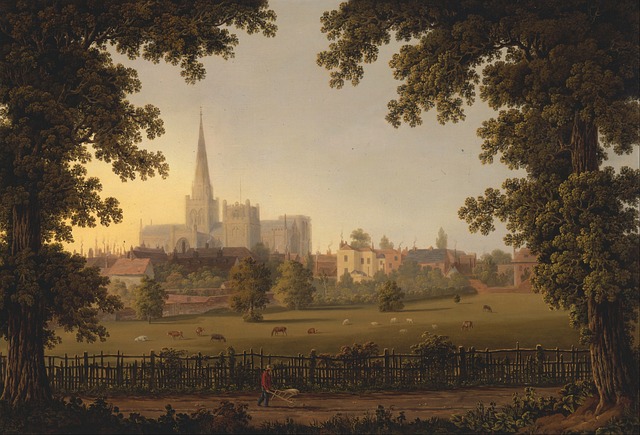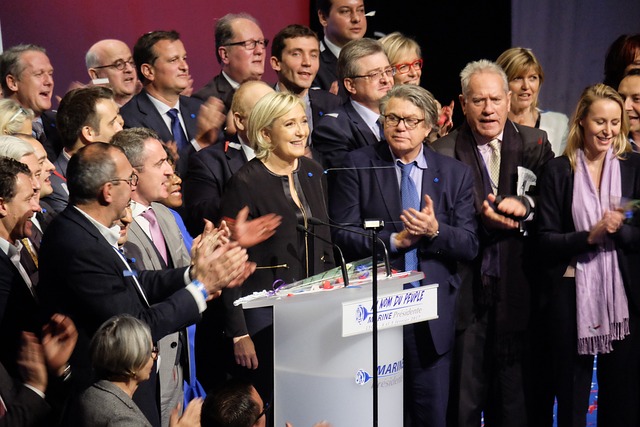Real estate plays a pivotal role in community innovation by strategically shaping urban environments. Through the development of mixed-use neighborhoods, co-working spaces, and community hubs, real estate fosters creativity, collaboration, and knowledge sharing. These physical spaces not only provide infrastructure but also cultivate a sense of belonging, enabling diverse skill sets to intersect and form unexpected partnerships. Community-driven projects, such as Berlin's Gethsemane Housing Project and Brooklyn's Bushwick Collective, exemplify how real estate can be harnessed for sustainable development, community engagement, and eco-friendly design, transforming underutilized spaces into vibrant cultural hubs that drive economic growth.
In today’s competitive global market, fostering an innovation economy is pivotal for communities to thrive. This article explores how progressive community initiatives, driven by real estate, can catalyze economic growth and societal progress. We delve into strategies such as transformative urban planning, leveraging technology, and promoting accessibility through public-private partnerships. By cultivating diverse, inclusive spaces that encourage collaboration and continuous learning, communities can become powerful engines of innovation, reshaping the future with every development project.
Real Estate as a Catalyst for Community Innovation

Real estate plays a pivotal role in catalysing community innovation within the ever-evolving economy. The physical spaces we inhabit shape our interactions, ideas, and collaborative efforts, making them strategic assets for fostering progress. Urban planning and development practices can intentionally create environments that encourage creativity, entrepreneurship, and knowledge exchange. For instance, mixed-use neighbourhoods combine residential, commercial, and recreational spaces, fostering diverse connections and igniting innovative ideas.
Community hubs within real estate developments, such as co-working spaces, shared workshops, and event venues, serve as incubators for startups and creative minds. These spaces not only provide physical infrastructure but also create a sense of belonging, nurturing the exchange of skills, resources, and perspectives. As a result, communities become hotbeds of innovation, driving economic growth and social development through collective creativity.
– Exploring the potential of real estate to foster collaborative spaces and innovative ecosystems

Real estate plays a pivotal role in shaping the landscape of innovation and collaborative efforts within communities. The strategic development and utilization of physical spaces can cultivate environments that stimulate creativity, knowledge sharing, and entrepreneurship. By transforming traditional real estate concepts, we can create thriving hubs where ideas flourish and like-minded individuals connect, fostering an ecosystem conducive to innovation.
One approach is to design and curate spaces that encourage interactions and cross-pollination of diverse skills. Co-working offices, makerspaces, and incubators are excellent examples of real estate adaptations that promote collaboration. These spaces not only provide physical infrastructure but also cultivate a sense of community among residents, entrepreneurs, and innovators. The intermingling of different fields can lead to unexpected partnerships, driving the creation of new products, services, and business models, ultimately contributing to a robust innovation economy.
– Case studies of successful community-driven real estate projects

In recent years, community-driven real estate projects have emerged as powerful catalysts for innovation in urban spaces. These initiatives, often led by local residents and activists, prioritize collective ownership and sustainable development. Case studies from around the globe highlight their success. For instance, in Berlin, Germany, cooperative housing models like the Gethsemane Housing Project have not only provided affordable living options but also fostered a sense of community and creative collaboration among residents. Similarly, in Brooklyn, New York, the Bushwick Collective transformed an abandoned lot into a vibrant public art space, attracting artists, investors, and locals alike, demonstrating how real estate can be reimagined as a platform for cultural expression and economic growth.
These projects challenge traditional real estate practices by emphasizing community engagement, eco-friendly design, and shared resources. They showcase that by empowering local communities to shape their surroundings, innovation flourishes. This bottom-up approach encourages residents to actively participate in creating spaces that meet their unique needs, leading to more diverse and dynamic urban landscapes. As a result, these community-driven initiatives have attracted significant interest from both investors and policymakers looking to promote sustainable and inclusive economic growth through real estate.






